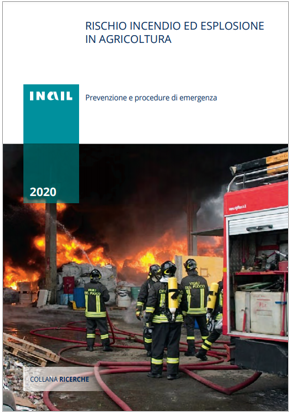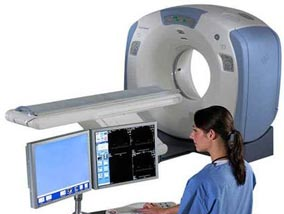
Some Industrial Chemicals: IARC Volume115 (2018)
This one-hundred-and-fifteenth volume of the IARC Monographs contains evaluations of the carcinogenic hazard to humans of seven industrial chemicals to which workers or the general population are or can be potentially exposed.
All seven agents were accorded high or medium priority for evaluation in the IARC Monographs programme by an Advisory Group that met in 2014 (Straif et al., 2014). 3-Chloro-2-methylpropene was evaluated previously in Volume 63 of the IARC Monographs (IARC, 1995) as not classifiable as to its carcinogenicity to humans (Group 3). Hydrazine was evaluated previously as possibly carcinogenic to humans (Group 2B) and N,N-dimethylformamide as not classifiable as to its carcinogenicity to humans (Group 3) in Volume 71 of the IARC Monographs (IARC, 1999).
Since the previous evaluations, new data have become available. A summary of the findings of this volume appears in The Lancet Oncology (Grosse et al., 2016).
High production volume chemicals and exposure measurement data
Four “high production volume” chemicals (N,N-dimethyl-p-toluidine, 2-mercaptobenzothiazole, tetrabromobisphenol A, and N,N-dimethylformamide) were evaluated. The Working Group noted that for two of these (N,N-dimethyl-p-toluidine and 2-mercaptobenzothiazole) no data on exposure measurement were available in occupational settings or the general population.
Data on exposure measurement were also lacking for two other chemicals evaluated in the present volume (3-chloro-2-methylpropene and
hydrazine).
Isoniazid
Hydrazine is a metabolite of isonicotinic acid hydrazide (isoniazid), which was evaluated in Supplement 7 of the IARC Monographs as not
classifiable as to its carcinogenicity to humans (Group 3) (IARC, 1987). Data on hydrazine and its metabolites from studies on isoniazid and isoniazid metabolites are included in Section 4 of the monograph on hydrazine, but isoniazid was not re-evaluated.
IARC 2018
_______
The agent is described according to the wording of one of the following categories, and the designated group is given. The categorization
of an agent is a matter of scientific judgement that reflects the strength of the evidence derived from studies in humans and in experimental animals and from mechanistic and other relevant data.
Group 1: The agent is carcinogenic to humans.
This category is used when there is sufficient evidence of carcinogenicity in humans. Exceptionally, an agent may be placed in this category when evidence of carcinogenicity in humans is less than sufficient but there is sufficient evidence of carcinogenicity in experimental animals and strong evidence in exposed humans that the agent acts through a relevant mechanism of carcinogenicity. Group 2. This category includes agents for which, at one extreme, the degree of evidence of carcinogenicity in humans is almost sufficient, as well as those for which, at the other extreme, there are no human data but for which there is evidence of carcinogenicity in experimental animals. Agents are assigned to either Group 2A (probably carcinogenic to humans) or Group 2B (possibly carcinogenic to humans) on the basis of epidemiological and experimental evidence of carcinogenicity and mechanistic and other relevant data. The terms probably carcinogenic and possibly carcinogenic have no quantitative significance and are used simply as descriptors of different levels of evidence of human carcinogenicity, with probably carcinogenic signifying a higher level of evidence than possibly carcinogenic.
Group 2A: The agent is probably carcinogenic to humans.
This category is used when there is limited evidence of carcinogenicity in humans and sufficient evidence of carcinogenicity in experimental animals. In some cases, an agent may be classified in this category when there is inadequate evidence of carcinogenicity in humans and sufficient evidence of carcinogenicity in experimental animals and strong evidence that the carcinogenesis is mediated by a mechanism that also operates in humans. Exceptionally, an agent may be classified in this category solely on the basis of limited evidence of carcinogenicity in humans. An agent may be assigned to this category if it clearly belongs, based on mechanistic considerations, to a class of agents for which one or more members have been classified in Group 1 or Group 2A.
Group 2B: The agent is possibly carcinogenic to humans.
This category is used for agents for which there is limited evidence of carcinogenicity in humans and less than sufficient evidence of carcinogenicity in experimental animals. It may also be used when there is inadequate evidence of carcinogenicity in humans but there is sufficient evidence of carcinogenicity in experimental animals. In some instances, an agent for which there is inadequate evidence of carcinogenicity in humans and less than sufficient evidence of carcinogenicity in experimental animals together with supporting evidence from mechanistic and other relevant data may be placed in this group. An agent may be classified in this category solely on the basis of strong evidence from mechanistic and other relevant data.
Group 3: The agent is not classifiable as to its carcinogenicity to humans.
This category is used most commonly for agents for which the evidence of carcinogenicity is inadequate in humans and inadequate or limited in experimental animals. Exceptionally, agents for which the evidence of carcinogenicity is inadequate in humans but sufficient in experimental animals may be placed in this category when there is strong evidence that the mechanism of carcinogenicity in experimental animals does not operate in humans. Agents that do not fall into any other group are also placed in this category. An evaluation in Group 3 is not a determination of non-carcinogenicity or overall safety. It often means that further research is needed, Preamble 31 especially when exposures are widespread or the cancer data are consistent with differing interpretations.
Group 4: The agent is probably not carcinogenic to humans.
This category is used for agents for which there is evidence suggesting lack of carcinogenicity in humans and in experimental animals. In some instances, agents for which there is inadequate evidence of carcinogenicity in humans but evidence suggesting lack of carcinogenicity in experimental animals, consistently and strongly supported by a broad range of mechanistic and other relevant data, may be classified in this group.
Allegati
|
Descrizione |
Lingua |
Dimensioni |
Downloads |
 |
|
EN |
319 kB |
5248 |
 |
|
EN |
231 kB |
2205 |
 |
|
EN |
523 kB |
1694 |
 |
|
EN |
744 kB |
1703 |
 |
|
EN |
683 kB |
2817 |
 |
|
EN |
393 kB |
3600 |
 |
|
EN |
784 kB |
1530 |
 |
|
IT |
4056 kB |
941 |



































